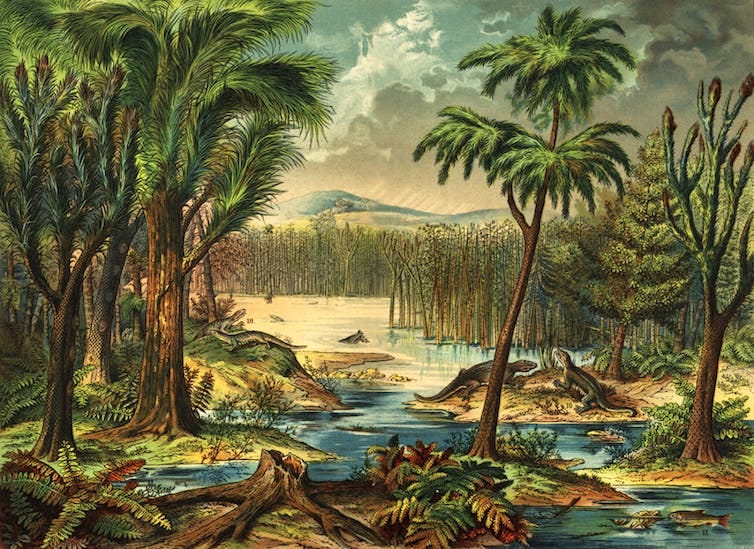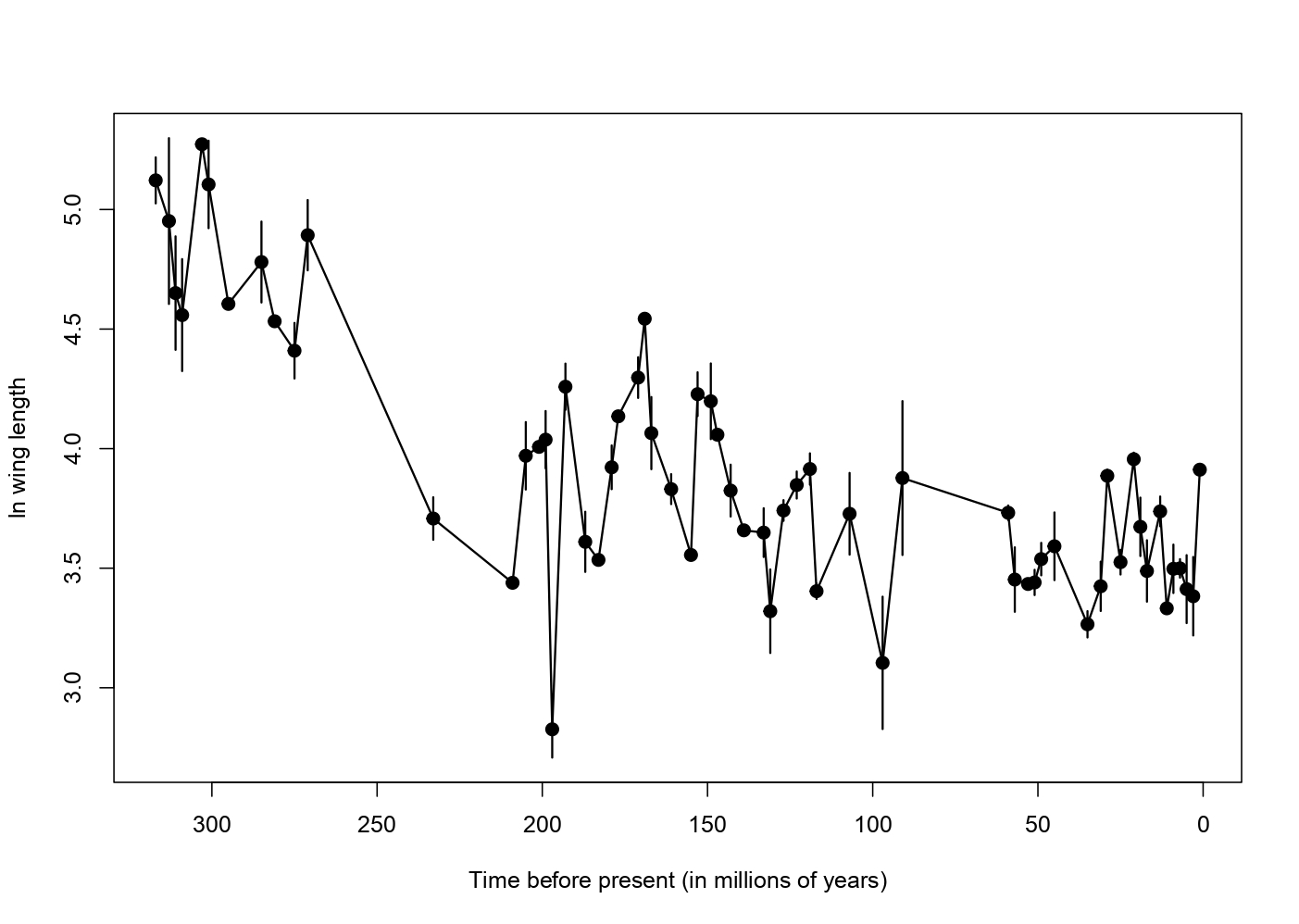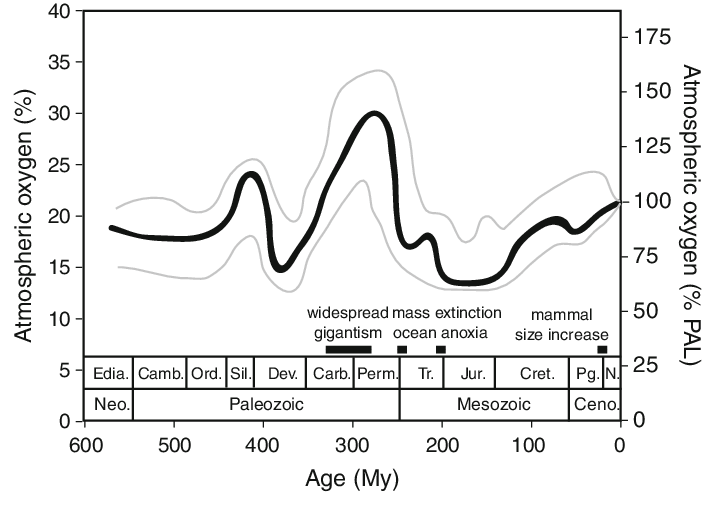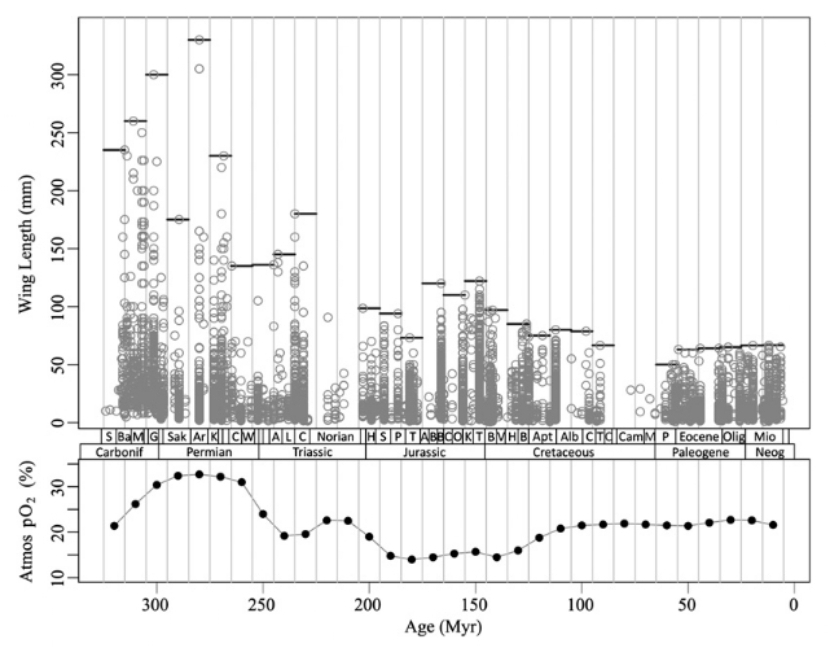
A Story of Ice or Fire: How Does Temperature Affect Body Size in Insects
Let’s take a walk back in time. To be specific, let’s go to 320 million years ago, to a period called the Carboniferous. At a cursory glance it would look quite similar to modern rainforests. Until you take a closer look at the trees and you realize that all of the “trees” are massive towering ferns. Ferns as big as modern seed bearing trees.

You are slightly lightheaded due to the significantly higher oxygen content in the air. A slight shiver sets in, it’s quite cold as well. Much colder than what one would expect in a rainforest. There is a lot of movement in the shadows of the trees but the plants are too dense to make anything out.
Take a moment to get your bearings as your feet sink into the dense mulch covering the ground. There seems to be a clearing up ahead so you decide to go take a better look. No sooner than you step into the clearing something massive flies out from under the dense brush and startles you.
Expected a bird? Maybe one of those ancient flying reptiles? Instead it’s something very familiar yet incredibly alien!
It’s a dragonfly! but unlike the ones outside your house this one has a three foot wingspan. That’s when you start to realize -all of the creatures that you saw before were insects, absolutely massive ones.
This was what insects were like in their heyday. The dragonfly described above was called Meganeura which was about the size of a hawk. But it was far from alone in the giants department. In fact most insects of this time period were record setting giants. The largest dragonfly of all time existed in the Carboniferous, at no other time period has any dragonfly grown large enough to even challenge this record. Surprisingly dragonflies are not the only record setters of the Carboniferous. Most insect groups have their largest recorded sizes in this time period which is quite a significant pattern.
Now we can make an obvious observation. These insects did not remain giants, since in modern times a dragonfly with a 3 inch wingspan would be considered large let alone 3 feet.
So why were they this big? Something must have driven them to attain these large sizes, biotic or abiotic.
Paleontologists thrive for questions like these. Data where there is a possible pattern over millions of years. The specific field which deals with this is called Macroevolutionary theory. We deal with fossil data through huge windows of observation, either temporally or spatially.
First let’s take a look at our dataset. In any form of Macroevolutionary work, it is very important that our data is as dense through time as possible.
So we must choose a model group that is commonly fossilized. We also have to consider that our model group’s fossils must reliably represent the organism’s body size. For example, if you want to construct a dataset of human height in a country. Using scalp hair as a metric would be flawed since there is no correlation between total height and hair length.
Taking these things into account we landed on the group Odonata. All these criteria are met by a few groups of insects, one of them being Odonates. These represent dragonflies and damselflies. Not only are their wings quite commonly fossilized but their wing size has a direct correlation with their actual body mass.

In geology there is a popular phrase : “The present is the key to the past”.
Which is why our hypothesis should be grounded in phenomena we can observe in extant organisms. Since, we wanted to look at abiotic and biotic factors that might have affected body size in the past. We must first look at modern examples of factors that can affect body size.
For our focus group (insects) two main abiotic controls pop up.
- “The Temperature Size Rule”,
- “The limits of insect respiration”
The Temperature Size Rule is a phenomenon observed in both insects and more complex organisms like mammals. It relates back to the physical law called the “Square Cube Law”. An organism’s surface area increases in squares, while its volume increases in cubes. This results in larger organisms having much higher volume than surface area. The issue with this is that the heat in a body is produced proportionally to volume of cells, but has to be dissipated by the lower surface area. The resultant effect is bigger animals trapping much more heat in their bodies. This is not ideal in hotter climates but perfect in colder climates.
The basic principle of the temperature size rule rests on this. Colder climates almost always result in larger animals since they need to be bigger to preserve heat.

Hence we construct our first hypothesis : “Colder temperatures lead to larger body sizes being preferentially selected”
Now we take a look at the second point. Unlike us, insects have open respiratory systems. Which means that they do not have a pressurised circulatory system to carry gasses through their body. This results in their overall gas exchange being very inefficient compared to mammals or reptiles.
For an abnormally large insect to not suffocate, there needs to be an abnormally high amount of oxygen in the air. Luckily in the Carboniferous, oxygen content was in fact very high, 35% to be precise. If we look at p concentration throughout the Phanerozoic, the Carboniferous is the point of highest content. Coincidentally it would seem that the largest insect sizes were attained at this time.

So we can construct our second hypothesis stating that: “Oxygen content in the atmosphere has a proportional control on insect body size.”
Looking into literature we can see this hypothesis has been considered by Clapham and Kerr 2012. They worked on this problem and found a positive correlation between oxygen saturation and insect body size.

They also tested correlation with temperature and came up with sub par values implying bad to no correlation. This is an interesting result since theoretically, there is a strong indication that temperature should play a role in body size control. Secondly, by looking at the graph we can see that saturation recovers past 100 mya but there is a continued downward trend in insect body size. If saturation was the only control on insect body size, then we should have seen an upward trend past 100mya.
All of these clues point to the fact that there is more to this story than just saturation.
In our study we tested the correlation between temperature and odonate wing size through time. We did this by analyzing multivariate time series models. The two main models used are URW (unbiased random walk) and OU (Ornstein Uhnbleck). The Unbiased Random Walk (URW) model describes how several traits can change together over time purely by chance, like multiple variables drifting randomly without any preferred direction. Each trait changes at its own rate. Some traits may tend to change together if they are correlated. The Ornstein Uhlenbeck (OU) model adds another layer by including a “pull” toward certain preferred values, representing evolutionary or environmental constraints. In this model, traits still fluctuate randomly, but they tend to move back toward an optimal set of values instead of drifting endlessly. In simple terms, URW models show random and unconstrained evolution, while OU model’s evolution is guided toward stable, adaptive targets.
In multivariate modelling, we see whether one time series is affecting another time series in any way. For URW models this means whether one time series is influencing the random walk to another time series. For OU models this means whether one time series is affecting the optima of another time series, after properly parameterising all our models.
Before delving into the model data we can first take a glance at our raw datasets. Visually we can see that there appears to be some negative correlation between our two time series which is very promising.
| Model | K | log-Lik | AICc | \(\Delta AICc\) |
|---|---|---|---|---|
| URWdiag | 0 | -52.54092 | 113.6972 | 23.27788 |
| URWsym metric | 0 | -51.70938 | 114.3563 | 23.93698 |
| OU1 | 8 | -44.64526 | 107.6512 | 17.23188 |
| OU2 | 9 | -34.70966 | 90.41932 | 0.0 |
| OU3 | 9 | -39.21412 | 99.42824 | 9.00892 |
| OU4 | 11 | -35.77253 | 98.09679 | 7.67747 |
| OU5 | 8 | -136.2054 | 290.7714 | 200.35208 |
| OU5 param | 9 | -39.54269 | 100.0854 | 9.66608 |
Looking at our model results we can see that OU2 offers the most support. Which means that our best supported model is an Ornstein Uhnbleck process. When temperature is reaching an optima of some kind it is also pulling wing size towards a peak.
As per our work the output matrix of the model produces a negative slope. This supports our observation that there is a negative correlation between temperature and body size. Our model data overall supports our hypothesis of temperature affecting body size negatively.
This confirms our suspicions that saturation alone is not controlling body size of insects. The Carboniferous period had the lowest temperatures and the highest saturation. This led to odonate body sizes reaching an all time high. Following that we observe a sharp drop in body size. At this time there was a rapid increase in temperature due to the Permian extinction accompanied by a decrease in saturation. In the Mesozoic (252 to 66 mya) we see that temperatures shift to lower values similar to the Carboniferous (359 to 299 mya) a few times but there isn’t a proportional response in insect body size. This is likely due to the fact that the mesozoic was plagued by low saturation values.
In the Cenozoic despite values being relatively high and temperature dropping to levels lower than the average in Mesozoic there is no real response in body size of insects. Predation pressure can play a big role in the evolution of a lineage.
Our current hypothesis is that the evolution of crown birds in the paleogene creates predation pressure on insects as a whole. Further quantitative studies are needed to make this more concrete but it is a theoretically plausible hypothesis.
Conclusion
In nature it is very rare that only one variable controls an entire system. We observe this very frequently in modern ecological studies. Any biotic or abiotic factor in an ecosystem, if perturbed, can disturb the whole system. Applying this same principle to paleontological studies has yielded very promising results. This study is just one of many macroevolutionary trends which are being re-examined with a multivariate lens. Perhaps one day we will invent a time machine and go back to the mesozoic to know exactly why insect body size reached stasis. Until then our best bet is studies like these.
